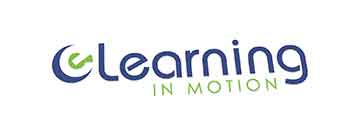There was a time when instructional designers and online instructors would talk about synchronous or asynchronous modes of eLearning. It seemed you needed to take a pick and design a course around either mode. Moreover, the choice was mostly influenced by available technology. Learning management systems were static platforms designed mostly for the delivery of content and the management of grades and certificates. If an instructor desired to provide immediate feedback to students, a synchronous mode was used in the form of a webinar, phone, chat, or some form of videoconferencing. eLearning has evolved thanks to new developments in web technologies (in some part), this has contributed to the evolution of learning management systems (LMS). We can now say that the line between both modes of eLearning is completely blurred.
If a course was taught in an asynchronous mode, a simple static LMS would deliver the course. Course materials, assignments, quizzes, and so on, would be consumed by the student at whatever pace they chose to follow. Of course, students would cover the course without immediate feedback, support would usually take some time to reach the student (feedback usually happened when assignments were returned). This mode serves well to students that like to take control of their learning, but not all students feel confident in taking control of their own instruction.
This does not happen in the synchronous mode for elearning, students interact with the instructor in real time, they can ask questions and receive immediate feedback. There can be assignments or quizzes to complete during the session, or they could be submitted later. In this synchronous mode, courses have scheduled sessions although these courses usually run for one or two sessions. Unfortunately, the logistics were not an easy feat to overcome, technology breakdowns (internet connection, for example) were a common occurrence. A session could only accommodate a few students, an instructor could handle a maximum number of students, they also needed to spend time preparing a presentation for the session. Many can attest that teaching online can be as exhausting as teaching in a classroom (or may be more work than that).
LMS platforms have evolved and can deliver either synchronous or asynchronous modes, in many cases, a combination of both. Most platforms can now deliver lecture videos, or they can run live virtual classes with many participants in attendance. These systems can record the session for students to watch later, as a review, or for those who could not attend due to scheduling conflicts (different time zones, for example). Video is also evolving in the educational area; many providers now offer in-video elements (such as quizzes). But the most powerful element of these videos is the data collected from learners watching these videos. The data will help stakeholders in the improvement of future offerings (reducing video time, adding more interaction, modifying quizzes).
Another great development came from the launch of authoring tools that allow the design of engaging modules that contain multimedia and interactive elements. We can argue these elements belong to the asynchronous mode because they do not require the presence of an instructor to be completed. This mode of design and production of materials has made possible the integration of many elements in one package. In a LMS platform, all these elements are scattered around the navigation tools. In a module developed using authoring tools you can have many of those elements in one place, this way the instruction is completed in one place, as opposed to a learner jumping around the LMS.
But it seems that the line between both modes has blurred and now instructors can plan their classes using both modes, each has their own advantages and disadvantages. Nowadays, your LMS should offer options for both modes of elearning. Authoring tools have developed tools that you can use to create asynchronous eLearning that is engaging and that takes advantage of the use of multimedia such as video, audio, and relevant images. Just remember that creating a “blended” eLearning course requires planning, and you need to make sure you understand why you will be using either mode, it is important to justify the effort spent (both modes require expenditure of resources) when selecting either mode.
As always, find us in social media. You can share this content by using the buttons below. If you have questions and comments, use the form at the bottom of this page, or contact me directly, and I will get back to you as soon as I can. Thank you for reading this post.

